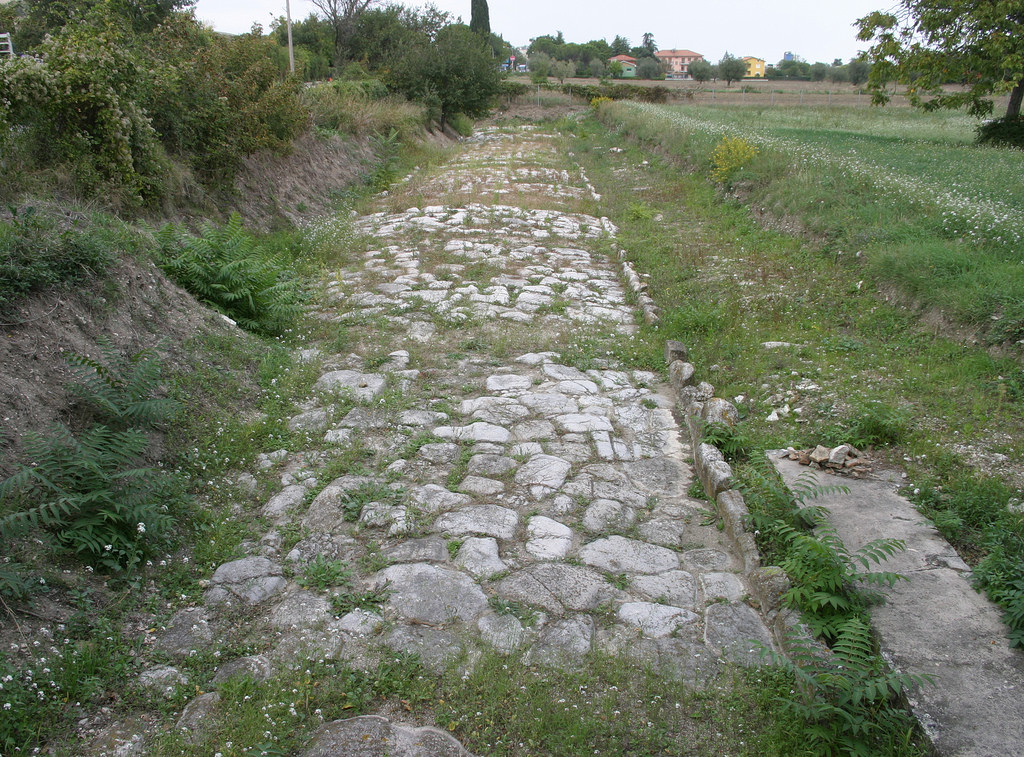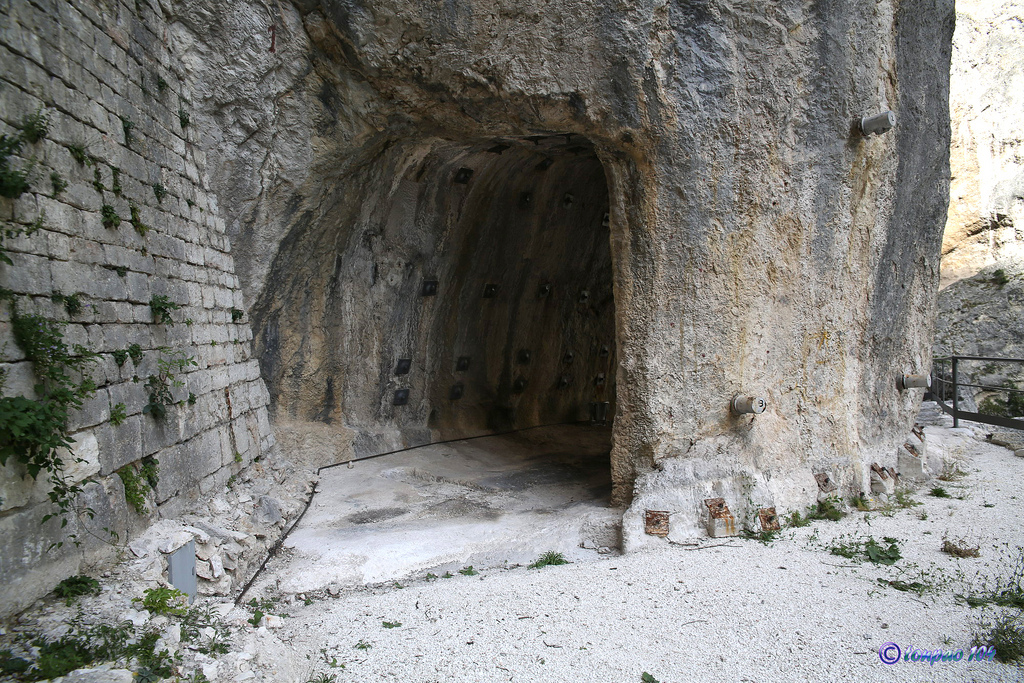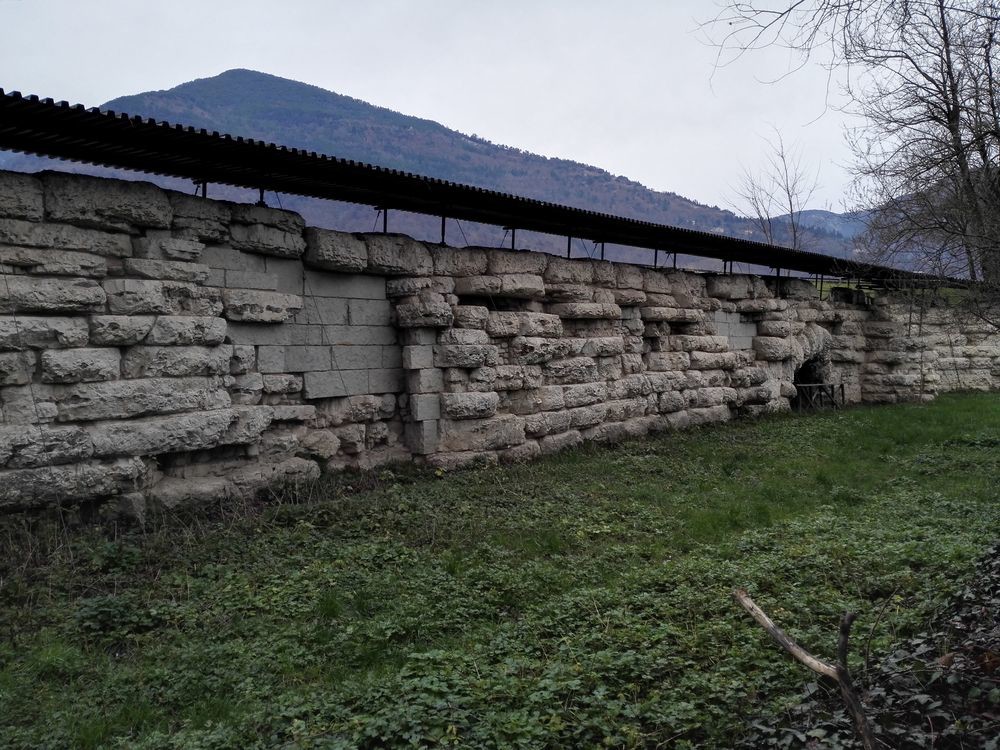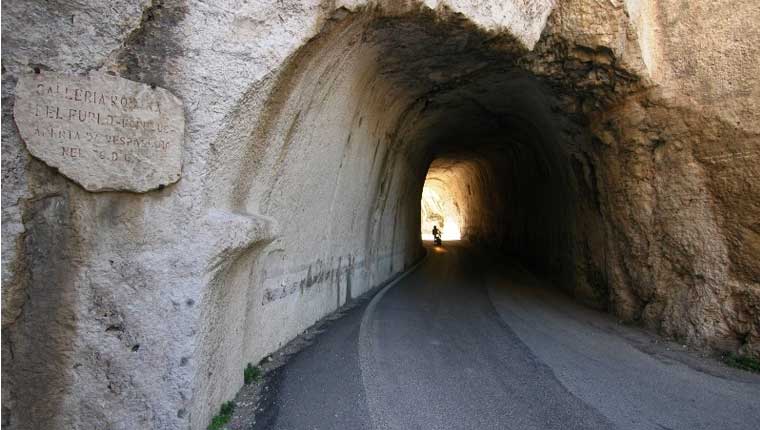Ancient Rome and the Via Flaminia
The Via Flaminia was crucial for connections between Rome, Cisalpine Gaul, and all of northern Europe.
Thus the cities that presented themselves as the main junctions of this route experienced a happy prosperity: from Rimini to Pesaro to Fano, then on to Rome until meeting the incredible bottleneck of the Furlo Gorge, an extraordinary canyon between the Pietralata and Paganuccio mountains, and then on to the capital of the empire.
Today, those who follow the ancient route of the Via Flaminia will encounter archaeological sites of great importance, walled towns perched on the hills of the Metaurus Valley, picturesque natural scenery: miles and miles of small wonders to be discovered unhurriedly.

The History
This anciente road that connect the Adriatic and Tyrrhenian coasts has a “father”: the Roman consul Caius Flaminius. Thousands of slaves were employed to complete the ambitious work, and the consul’s legions also engaged in the not-so-easy construction.
The Tunnel
The Furlo possesses four tunnels, each of which represents a milestone in the history of Italian roadways.
The first Umbro-Etruscan tunnel was built in 400 B.C. and responded to the need to develop trade relations. This tunnel measured 8 meters in length, 3.30 in width and 4.40 in height. The technique used for its construction involved heating the rock and then immediately cooling it with water and vinegar, then going to work with a chisel and removing the chipped material. It probably took a couple of years for the tunnel to be completed, but the effects were immediately evident: at last the gorge could be crossed even when the waters of the Candigliano River were in flood.
The road soon became a European thoroughfare, and the Romans equipped it with road-building works, such as viaducts and retaining walls, at its most critical points. Near the Abbey of Petra Petrusa a beautifully crafted viaduct is preserved, and admirable masonry supporting the road is still visible in the Furlo Gorge. Later, it was an emperor who was in charge of the work to improve the Flaminian Way: in fact, Vespasian, from 70 to 76 AD, had work done to open a tunnel that made it easier to cross the gorge.
Later, Emperor Vespasian, mindful of the difficulties his army encountered in crossing the Furlo, decided to make the passage easier by digging a new tunnel. Work on its construction lasted six years, and thousands of slaves were engaged in the undertaking. When completed, the tunnel had respectable dimensions: 38.30 meters long, 5.40 meters wide and 4.80 meters high.
In the 1980s ANAS put in place a project to upgrade the Flaminia of two parallel one-way tunnels. The first was opened to traffic in 1985, the second in 1991.
The fate of the Flaminia was marked by more or less long periods of interrupted transit caused by the boulders that, falling from the walls of Pietralata, obstructed its passage.
Today the Via Flaminia, in addition to maintaining its role as an important roadway, allows visitors to travel a fascinating itinerary.



The route
The Via Flaminia is a real open-air museum: bridges, tunnels, roadside cippus, inscriptions, archaeological sites, sewer systems, etc.
Starting with the Augustus Arch (9-10 AD) in Fano, one of the cities on the route of the ancient consular road that best preserves its Roman vestiges.
Objects such as pottery, amphorae, coins, and a rare marble head of Attis were found in Tavernelle di Serrungarina, objects that seem to indicate the existence of an ancient stopping station. The remains of a sacred shrine can be seen, also in Tavernelle, and then, in the municipality of Fossombrone, the locality of San Martino del Piano where the archaeological area of the ancient Forum Sempronii is visible. Not far away are also the remains of a domus with a thermal facility. The High Court Archaeological Museum, where many artifacts from this area are preserved, is worth visiting.
Not far away is the village of Calmazzo, where a Roman-era burial enclosure with two cippus commemorates the Cissonia family.
From Calmazzo you reach the impressive Furlo Gorge, with the Vespasian’s Tunnel (76 AD) that you can still drive through.
Once past the Gorge, you reach the town of Acqualagna where, near the ancient abbey of San Vincenzo, is located the Roman viaduct built in the Republican era with Furlo stones, which was intended to repair the Flaminia road from the flooding of the Candigliano stream.
In Cagli (ancient Cale) the Mallio Bridge remains, built at the end of the Republican age and once intended to cross the Bosso stream. Two more Roman bridges in the municipality of Cantiano: at Pontericcioli, along a route that deviates from the current route of the road, several Roman structures emerge, as well as the so-called Ponte Grosso, from the Augustan age, with two arches separated by a breakwater. A second monumental Ponte Grosso still allows the Via Flaminia to cross the Burano River through two arches about 7 meters wide, with a central pier and breakwater.